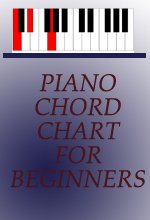Minor Chords : Basic Piano Chords
for Beginners
There are twelve basic minor chords that can be played on the piano. These basic chords are also called minor triads. Each minor triad can be extended by adding extra tones to them. When extra tones or notes are added to each chord, the name of the chord is adjusted based on the degree of note added.
For example – The letters that make up the A minor triad are A, C, E.
However, the letters that make up the A minor seventh chord are A, C, E and G. The G in the Am7 chord is an added tone or note used to extend the chord.
But please note that this page is about basic minor triads and so extended chords will be looked at in another lesson. So how are minor chords different from major chords?
A minor triad can be formed using the same principle as of a major chord. However the degrees of notes use are some what different. Minor chords have a minor or flatted third while major chords have major thirds.
For example - The letters of the C major triad are C, E, and G; while the letters of C minor triad or chord are C, E-flat and G. Remember “E” would be the third note in the C major scale. When E is changed to E-flat, the entire tonality of the chord changes to minor.
Look at the illustration below for more information.
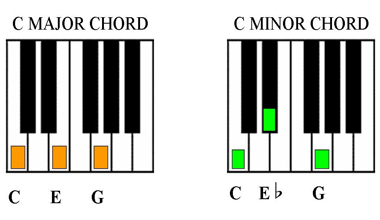
HOW ARE MINOR TRIADS OR CHORDS FORMED?
There is more than one way to form minor triads. However, it is very important that you understand the basic principles as to how minor chords are formed. The first concept you should be aware of is forming minor triads or chords from minor scales.
The first, third and fifth notes of a minor scale comes together to form the root minor or tonic minor of the specific scale.
Take a look at the illustration below for more information.
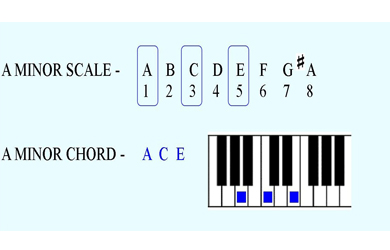
Because each minor scale is the relative minor for a particular major
scale, all minor triads are relative minors for specific major chords.
Click here to learn how minor scales are relative to major scales!
This brings us to the concept of forming a minor triad from major scale. In a major scale the sixth note can be used to form the relative minor triad.
Here is an illustration that will explain this concept better.
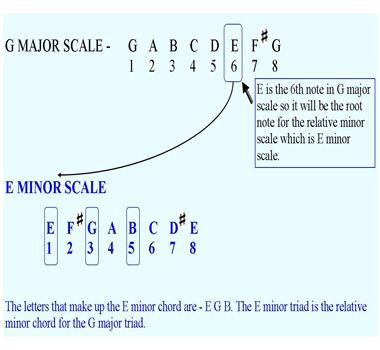
There are three minor triads that can be constructed from a major scale. Earlier we have looked at the sixth chord (which the relative minor).
The two other minor triads that can be formed from a major scale are the second chord which is constructed from the second degree of the scale and the third chord which is constructed from the third degree of the scale.
Take a look at the illustration below. It should clear things up for you.
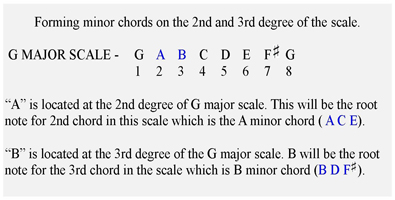
Remember that both minor and major chords are easily formed by choosing every other note in the scale.
Click here to leave the minor chords page and return to home page!
Subscribe to receive free piano lessons
E-zines and other updates!








